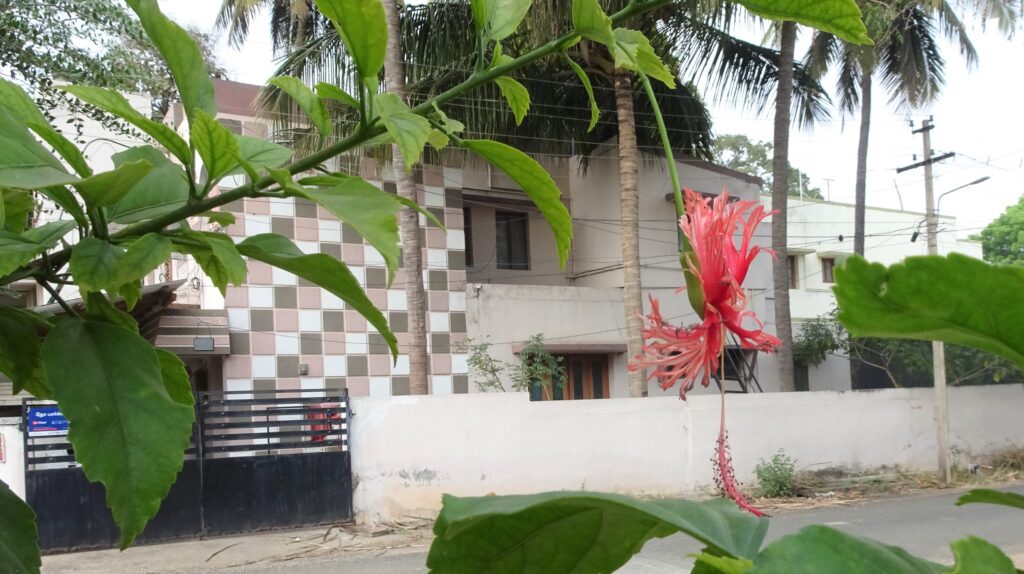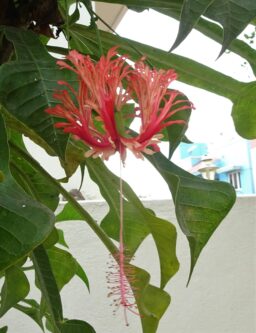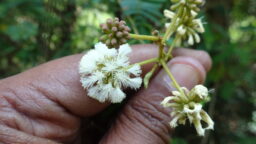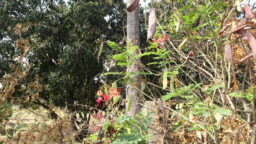
Common name: Japanese lantern, Spider hibiscus.
Japanese lantern is a shrub of East African origin and often seen planted in India as an ornamental plant. The plant is shrub size and grows to a height of about 2 meters; the branches arch down and produce reddish/pink flowers. The leaves are simple and arranged alternatively; often leafs are bunched together on the axis. The lower portion of the leaf margin is entire, the upper portion is dentate. The leaf surface on both sides is of pale-green in color. The leaf stalk and leaf length measure around 3.8 cm and 7 cm respectively. The leaves are ovate in shape; apex is acute and leaf base is cuneate. The inflorescence is axillary and bears a single flower. The flower stalk measure around 10.5 cm and the flowers are seen dropping down. The flowers (8 cm across) have five separate petals which are frilled and deeply divided and are generally red in color. The epicalyx was not located in the plant. The calyx is united and has two lobes the staminal column is very long and is seen hanging well outside the corolla. The stamina column is very large and the stigma is divided into five segments. The fruit is in the form of a capsule. The plant is propagated by cuttings.





